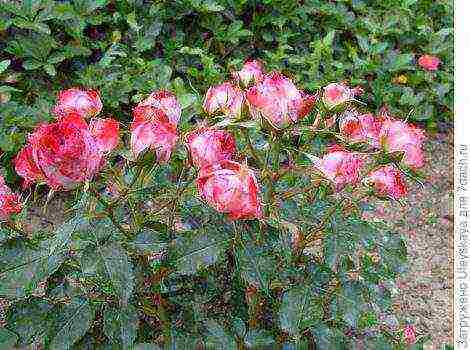Content
- 1 1. Altair
- 2 2. Bakchar giant
- 3 3. Blue spindle
- 4 4. Long-fruited
- 5 5. Cinderella
- 6 6. Leningrad giant
- 7 7. Morena
- 8 8. Nymph
- 9 9. Bluebird
- 10 10. Tomichka
- 11 General description of the plant
- 12 Reproduction of honeysuckle
- 13 Fruiting
- 14 Honeysuckle varieties
- 15 What determines the choice of shrub variety
- 16 Tomsk varieties
- 17 Honeysuckle varieties for the Moscow region
- 18 Varieties for the Ural region
- 19 Self-infertile varieties
- 20 Decorative forms
- 21 Instead of a conclusion
- 22 Honeysuckle - varieties
- 23 Which is the sweetest honeysuckle? a neighbor has three bushes. sour, sweet and sour and sweet. sorts of it,
- 24 What are the tastiest varieties of honeysuckle? When is it better to plant it?
- 25 Honeysuckle is a very healthy berry, but what is the tastiest honeysuckle variety?
- 26 Description of varieties of honeysuckle
Edible honeysuckle is not only a useful plant that can give a rich harvest of delicious berries, but also a bright decoration of the spring garden. Let's see which varieties of honeysuckle should be preferred.
Based on the opinion of experienced gardeners, we have selected the top ten varieties. Although, in terms of decorative qualities, these shrubs can sometimes be inferior to other types and varieties of honeysuckle, but first of all they are famous for their good yield, winter hardiness and unpretentiousness.
In the list, the varieties are located not by popularity (they are all held in high esteem by gardeners), but alphabetically.
1. Altair
This early maturing variety has already managed to fall in love with many gardeners due to its resistance to cold, common diseases and pests. Delicious and sweet berries (blue-blue with a waxy bloom) ripen on a bush with a dense and squat crown in mid-June and do not crumble for a long time. Therefore, Altair is great for people who come to the country no more than once a month. After all, even fully ripe berries remain on the plant until you pick them.
| Bush height (m) |
Ripening period berries |
Fruit weight (g) |
Yield (kg per bush) |
Pollinating varieties |
| Up to 1.4 | June 12-16 | 0,9-1 | 1,7-2 |
Blue spindle Malvina, Morena |
2. Bakchar giant
This large-fruited variety of medium ripening is suitable for those who have enough free space on the site. After all, the powerful bushes of the Bakchar giant reach a height of almost 2 m, and a width of 1.3 m. The crown is oval, spreading, loose. Thanks to the sparse crown, it is convenient to pick fruits from the bush.
Leaves are gray-green, matte. Berries are large (up to 5 cm long), elongated-oval, slightly asymmetrical, dark blue with a waxy bloom. Fruits can be eaten fresh, frozen, and can also be used for making wines, juices, jellies, compotes, and preserves from them.
The plant is winter-hardy, resistant to diseases and pests.
| Bush height (m) |
Ripening period berries |
Fruit weight (g) |
Yield (kg per bush) |
Pollinating varieties |
| 1,7-1,9 | end of June | 1,8-2,5 | 2-3 |
Amphora, Pride of Bakchar, Azure, Nymph, In memory of Gijuk |
3. Blue spindle
This early maturing honeysuckle is distinguished by its high yield, good resistance to frost and drought, as well as to diseases and pests.
The crown of the bush is rather rare, the shoots are thin, straight, greenish in color. Leaves are oval, elongated, dark green. The berries are large (about 2.7 cm long), shaped like an elongated spindle. The skin is blue with a waxy bloom. The flesh is sweet and sour, but can taste bitter during drought.Therefore, when growing this honeysuckle, you must observe the watering regime.
The disadvantage of this variety is that ripe berries quickly crumble.
| Bush height (m) |
Ripening period berries |
Fruit weight (g) |
Yield (kg per bush) |
Pollinating varieties |
| Up to 1 m | June 12-23 | 1-1,5 | 1,5-2,5 |
Cinderella, Kamchadalka, Azure, Bluebird, Tomichka, In Memory of Gidzyuk |
4. Long-fruited
This is one of the first zoned Ural varieties. Long-fruited honeysuckle is characterized by high winter hardiness and early ripening of fruits in the form of an elongated flat cylinder. Their length is up to 2.7 cm. The bush is spreading, with a rounded crown. Shoots are thin, long. Leaves are lanceolate, elongated, dark green.
The skin of the fruit is thin, violet-blue, with a whitish waxy coating. The pulp is sweet and sour, tender, without bitterness. Sprinkling rate of ripe berries is average.
| Bush height (m) |
Ripening period berries |
Fruit weight (g) |
Yield (kg per bush) |
Pollinating varieties |
| Up to 1 m | June 10-20 | 0,9-2 | 1,4-3 |
Zest, Smolinskaya, Sineglazka, Morena, Chernichka. But the best pollinator variety is Chelyabinka |
5. Cinderella
On compact low bushes with a dense crown, thin light green shoots and leaves of the same color, tasty berries ripen in the form of an elongated cylinder or spindle. The skin is thin, dark blue (almost black) with a blue bloom. The pulp is soft, sweet and sour, with a light strawberry aroma, very tasty.
Due to the low growth of the bush, picking berries is difficult, and they also quickly crumble. However, most of the fruits are located on the outside of the crown, therefore, when manually harvesting, it is possible to save the crop.
The variety has a very good winter hardiness, flowers are immune to recurrent spring frosts. In addition, the plant is resistant to disease.
| Bush height (m) |
Ripening period berries |
Fruit weight (g) |
Yield (kg per bush) |
Pollinating varieties |
| 0,6-0,7 | June 15-22 | 0,6-1,4 | 1-3 |
Azure, Gerda, Amphora, Kamchadalka, Leningrad giant, In memory of Gidzyuk, Parabelskaya, Tomichka |
6. Leningrad giant
An adult shrub of this vigorous honeysuckle can reach a height of just over 2 m. It is erect, slightly spreading, with a compact rounded-oval crown. The berries are large (about 3 cm long), as a rule, elongated-cylindrical. They ripen unevenly throughout the month. The berries are arranged in bulky bunches, so they are easy to pick.
The skin is dense, dark blue, with a thin layer of gray waxy bloom. The pulp is dense, fibrous, delicate in taste, sweetish-sour, does not taste bitter.
The variety is resistant to diseases and pests, the plant is not damaged by frost even in severe winters, the flowers can withstand spring frosts down to –7 ° С.
| Bush height (m) |
Ripening period berries |
Fruit weight (g) |
Yield (kg per bush) |
Pollinating varieties |
| 1-2 | June 20 - July 30 | 1-4 | 1-3,3 |
Gzhelka, Blue spindle, Malvina, Morena, In memory of Kuminov, Bluebird, Start |
7. Morena
This early-maturing honeysuckle has a rather wide (up to 1.7 m) and squat crown of an oval shape, lanceolate leaves of a light green color and large fruits (up to 3 cm long) in the form of an elongated jug. They have a thin, almost transparent, blue-blue skin with a pronounced waxy coating. The pulp of the berries is sweet and sour, tender, with a light aroma, without bitterness. Ripe fruits do not fall off the bush for a long time.
The winter hardiness of the variety is above average. The plant is rarely damaged by pests and practically does not get sick.
| Bush height (m) |
Ripening period berries |
Fruit weight (g) |
Yield (kg per bush) |
Pollinating varieties |
| Up to 1.7 | June 15-30 | 1-3 | 1,2-2 |
Viola, Amphora, Blue spindle Kamchadalka, Malvina, In memory of Kuminov, Bluebird, Start |
8. Nymph
The shrub of this variety is medium-sized, with a rounded and slightly spreading crown, prone to thickening. Shoots are long, straight, brownish-green. Leaves are oblong-oval, dark green.The berries are rather large (up to 3 cm long), elongated, resemble a spindle in shape, sometimes they are curved and have bumps on the surface.
The skin is bluish-blue, covered with a waxy bloom of medium intensity. The pulp is fibrous, sweetish-sour, slightly tart, with a spicy aroma and light bitterness. On young plants, ripe berries do not crumble for a long time, and on old ones, ripe fruits quickly end up on the ground.
The variety is very winter hardy, suitable for growing in extreme conditions. The plant is rarely sick.
| Bush height (m) |
Ripening period berries |
Fruit weight (g) |
Yield (kg per bush) |
Pollinating varieties |
| Up to 1.7 | June 13-30 | 1-3 | 1,3-2 |
Amphora, Chosen One, Azure, Pavlovskaya, In memory of Gijuk |
9. Bluebird
This variety is obtained on the basis of Kamchatka honeysuckle. Bushes - vigorous, with a spreading oval crown. Shoots are thin, straight. Leaves are oval, with a pointed tip. Berries are medium (up to 2 cm long), in the form of a slightly elongated ellipse. The skin is bluish-black, with a strong waxy bloom. The pulp is tender, sour-sweet, slightly tart. The fruit tastes like blueberries.
Honeysuckle Blue bird is unpretentious in care, almost does not get sick, does not freeze in winter and is not afraid of harmful insects.
| Bush height (m) |
Ripening period berries |
Fruit weight (g) |
Yield (kg per bush) |
Pollinating varieties |
| 1,3-1,8 | June 14-22 | 0,8-1,2 | 1-2 |
Blue spindle, Cinderella Kamchadalka, Malvina, Morena, In Memory of Kuminov, Titmouse, Start |
10. Tomichka
This plant has a compact, semi-spreading crown, the ends of the shoots falling to the ground. Leaves are light green, slightly pubescent. The berries are shaped like a jug or a wide drop with a depressed top. They have an uneven surface, the skin is blue-violet (almost black) with a waxy coating. The pulp is sweet and sour, without bitterness. The berries are not crumpled during transportation.
In rare cases, the plant can damage aphids.
| Bush height (m) |
Ripening period berries |
Fruit weight (g) |
Yield (kg per bush) |
Pollinating varieties |
| 1,5-1,6 | June 10-20 | 1-2 | 2,5-3,2 |
Blue Spindle, Blue Bird, Pavlovskaya, Bakcharskaya, Vasyugan, Daughter of the Giant, Bakchar giant |
Do you grow edible honeysuckle on the site? If you have not yet decided to "settle" this useful shrub in your garden, read our article 5 reasons to grow honeysuckle in the garden. We hope she will dispel all your doubts!
On the plots of gardening enthusiasts, it is customary to grow at least one honeysuckle bush. And true admirers of this culture know that there are various varieties that differ in taste. In addition, gardeners know that plants belonging to different varieties can influence each other's yield. Therefore, it is not surprising that several specimens of this wonderful shrub can grow in their garden.
General description of the plant
Many varieties of honeysuckle are unpretentious, frost-resistant. The plant does not require painstaking care. Basically, it consists in pruning drying out branches, loosening the soil under and around the bush, removing weeds and feeding. Honeysuckle bushes respond positively to abundant watering, and do not tolerate drought well. Loosening of the soil should not be carried out to a great depth, since the roots of the plant are located close to the surface.
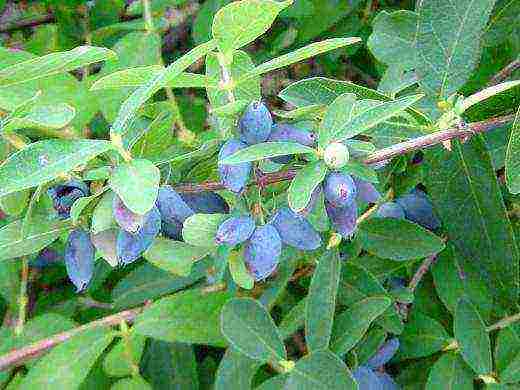
The beginning of flowering dates back to around mid-May - this largely depends on the weather and the region where the crop is grown. In the spring, the bush is covered with fragrant flowers. They attract a large number of insects, mainly bees, bumblebees, and flies. It is thanks to their visits that the bush is pollinated. It must be remembered that there are also self-fruitless varieties of honeysuckle, for pollination of which the presence of a plant of another variety is necessary on the site. Flowers are able to withstand a drop in air temperature to minus 5 - 7 degrees.
Reproduction of honeysuckle
The plant does not grow. Reproduction takes place by rooting annual shoots, cuttings, as well as green cuttings.The methods of obtaining planting material are similar to those used for the propagation of gooseberries and currants. Sometimes gardeners use the seed method of propagation of honeysuckle, which is considered to be the most laborious and troublesome.
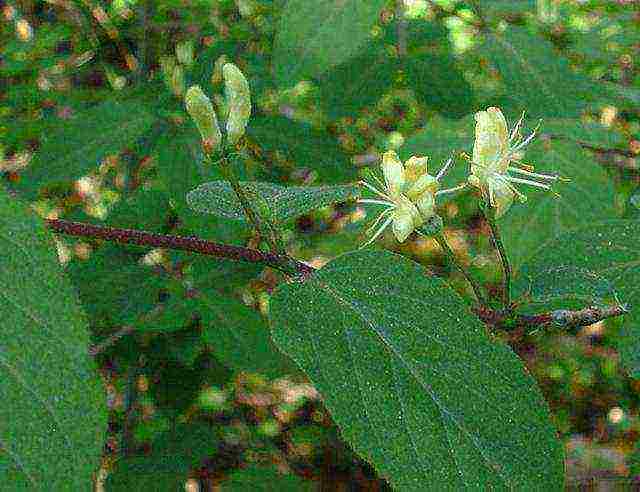
The plant should be planted in such a way that it is under the cover of the crowns of taller plants. Choosing such a planting site helps to achieve the best honeysuckle harvest. Its fruits, being in direct sunlight, can become smaller.
Honeysuckle has an attractive crown shape; the bush can become a real decoration of the gardening site during the entire growing season.
Fruiting
In the third or fourth year after planting annual shoots, honeysuckle begins to yield.
Fruits ripen very early (in the first half of June), even before strawberries or any other berries appear in the garden. This is undoubtedly a great advantage that honeysuckle has. Sweet varieties of berries ripen at an earlier date. But they are distinguished by the fact that when they reach maturity, the fruits quickly fall off. This is one of the negative properties of certain varieties of honeysuckle. Gardeners have found a way to harvest crops without loss. To do this, during the period of active ripening of honeysuckle berries, spread a film, paper or some other material under the bush, from which you can easily collect the sprinkled fruits later.
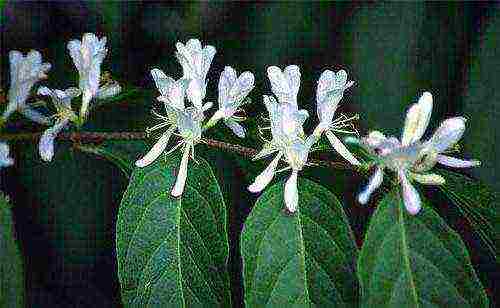
Berries are very rich in active substances, sugars, acids, vitamins, which have a beneficial effect on the functioning of various systems of the human body. They can be consumed fresh and processed.
There are many recipes for cooking dishes using honeysuckle. It can be prepared for the winter in the form of freezing, jam, jam, compote, juice. The color and taste of the jam is very similar to cherry jam. Honeysuckle juice is used as a food coloring.
Honeysuckle varieties
The popularity of the shrub increases from year to year. That is why, having received its beginning 40 years ago, breeding work is carried out very actively today. Today, there are many varieties and forms that honeysuckle can have. The best plant varieties are offered by many fruit nurseries and research institutes, so it is not difficult to acquire a specimen of interest to a gardener.
All existing crop varieties can be divided into groups for different reasons. Taking into account the ripening time of the berry crop, early-ripening, mid-ripening and late-ripening species can be distinguished.
Productivity, taste of berries, their size, shape, color, conditions for growing a bush - a list of distinctive properties that different varieties of honeysuckle have.
Depending on belonging to a particular variety, the berries can have different shades of purple, sometimes approaching black. A distinctive feature is a kind of bluish bloom that covers the honeysuckle fruits.
The shape of the berries is very diverse - oval, cylindrical, round-oval, fusiform, elongated or with a truncated end. Large-fruited varieties of honeysuckle can produce berries up to 2 cm long and 8 mm wide.
Taste characteristics are one of the main indicators of the variety. There are sweet, sour-sweet berries, with and without bitterness, and many other honeysuckle flavors are also known.
What determines the choice of shrub variety
Before deciding to plant a plant in the garden, it is advisable to familiarize yourself with the peculiarities of the variety, its distinctive characteristics. This will avoid disappointment when the fruits appear or the bush reaches the size of an adult plant.
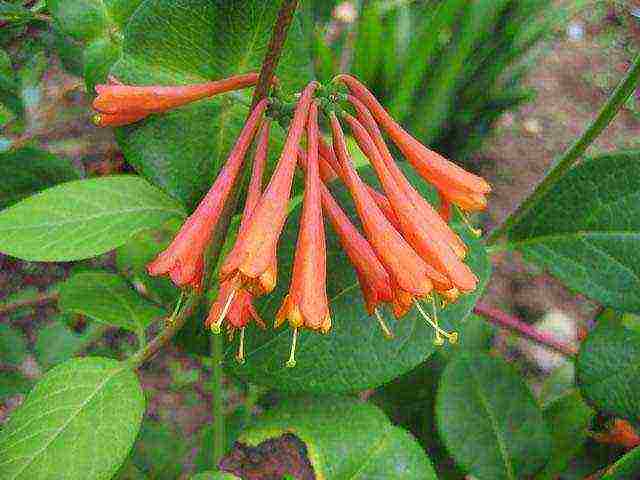
For some gardeners, not only the taste of the berries matters, but also the yield of the variety, which is also different. It ranges from 500 grams to 4 kg per bush.
It is necessary to take into account the size and shape of the honeysuckle bush in order to choose the right place for growing on the site.The bush usually reaches its maximum size after 6 - 10 years of growth.
A certain variety must be chosen and taking into account the region where the crop will be cultivated. For example, varieties of honeysuckle for the Moscow region differ from those that will grow well in the northern regions of the country.
Tomsk varieties
The forms developed in the NIISS of the city of Tomsk are very popular.
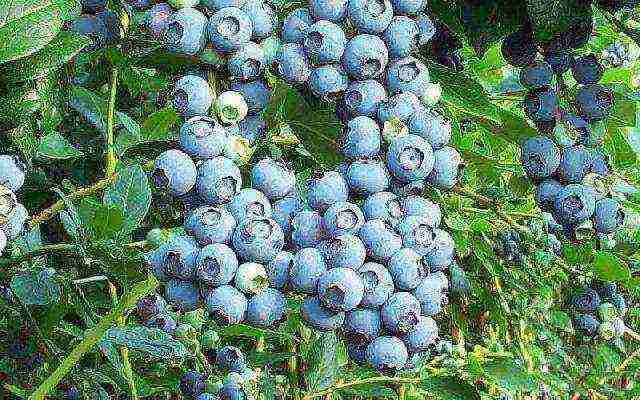
One of these varieties is the Bakchar giant. Honeysuckle has a high yield. The fruits have the shape of an elongated cylinder, the average size of which reaches 4 cm, and the weight is 2 grams. The dense skin allows keeping the berries fresh for a long time. For the same reason, transportation of the crop is allowed and the ability to avoid damage to the berries. The variety is loved by many for the pleasant sweet and sour taste of the fruit. The index of their crumbling after ripening is average. A powerful bush up to 1.9 meters high has an oval crown with sparse branches. Variety Bakcharsky giant – honeysuckle, which is recommended for cultivation in different regions of Russia. The plant belongs to the group of self-infertile forms. Varieties Nymph, Memory of Gidzyuk, Amphora, Pavlovskaya, Lazurnaya are pollinators for the Bakchar giant.
The best Tomsk varieties include Pride Bakchara, Silginka, Parabelskaya and many others.
Honeysuckle varieties for the Moscow region
The forms of the plant, bred for cultivation in the conditions of the Moscow Region and the Central Strip of Russia, are widely known.
The variety Kingfisher with a medium early ripening period appeared in the breeding farms of the Moscow Region. A powerful bush, having an oval crown shape, can reach 2.1 m in height. A distinctive feature of the variety is its high yield. The dense skin of the berries allows you to store them after picking. The fruits have an unusual round-oval shape with a blunt top. Their size reaches 1.6 cm, with a mass of 1.1 g. The berries are unusually pleasant to the taste - they are sweet with a slight sourness.
Honeysuckle varieties such as Kuminovka, Moskovskaya-23 and many others are also suitable for growing in the Moscow region.
Varieties for the Ural region
Honeysuckle varieties for the Urals should be distinguished primarily by their high frost resistance. Severe winters with sharp temperature changes should not adversely affect the growth and development of the plant.
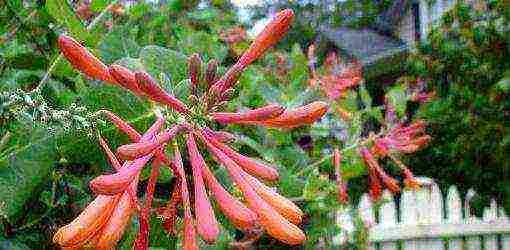
The high-yielding variety Elizaveta with an average ripening period was bred in the city of Chelyabinsk, taking into account all the climatic conditions of the region. A plant with a slightly spreading crown can reach a height of 2.4 m. Fruits are oval, 1.6 cm in size, weighing 1.2 g, have a surprisingly sweet taste and dense skin.
On the sites of the Ural gardeners, you can also find such varieties of honeysuckle as Lenita, Bazhovskaya, Volshebnitsa and others.
Self-infertile varieties
Many plants during the pollination period must interact with other species to obtain a good harvest. Otherwise, the harvest will be minimized or not at all. In other words, the plant requires a pollinator, and the choice will depend on which variety is being considered.
Honeysuckle Nymph, for example, prefers that varieties such as Pavlovskaya, Amphora, Lazurnaya, Chosen One grow on the site besides her.
For the convenience of gardeners, the sale of honeysuckle seedlings in nurseries is made not by single specimens, but by a pair or group of plants. It is not worth neglecting such an offer when buying planting material, since the harvest of berries will directly depend on the selection of varieties.
Decorative forms
Besides edible varieties of honeysuckle, its decorative forms are known. It is to such a variety that Tatarskaya honeysuckle belongs.

The plant gained its distribution due to its unpretentiousness, the ability of shoots to grow rapidly. In addition, Tatarskaya honeysuckle blooms beautifully in the spring for a whole month. The petals can be in different shades of color - from dark pink to white. And in the fall, the bushes are decorated with bright red or yellow berries.In addition, the densely growing branches have a large number of leaves, which are also very attractive. But the plant has one big drawback - its fruits are not only inedible because of the bitter taste, but they are also poisonous.
Due to its ability to grow even in conditions of high air pollution, Tatarskaya honeysuckle is used as a species for landscaping city streets, parks, squares.
The plant is also found in natural conditions, forming dense thickets. In some regions of the country, the shrub grows in the undergrowth of deciduous forests.
Instead of a conclusion
The varieties of honeysuckle described above are not limited to the above list. Breeders have more than a dozen forms of this useful plant. Their work on improving, changing the varieties of honeysuckle does not stop. Its new forms will continue to delight amateur gardeners.
Honeysuckle - varieties
Similar articles
The best varieties of honeysuckle
Choose. Tell me which variety has sweet and tasty berries?
Ornamental honeysuckle varieties
Honeysuckle can be propagated by cuttings. It takes fourteen days for honeysuckle to take root. By autumn, the honeysuckle will finally take root, but it needs to be covered for the winter, since the plant has not yet matured and may freeze out in the first winter.
It is better to buy seedlings in nurseries or specials. stores. At least 3 bushes.
Sweet varieties of honeysuckle
I have 5 honeysuckle bushes, I know for sure that there is a Blue Spindle - a good variety, Titmouse - serves more as a pollinator, but the berries are also tasty, they just are smaller, I don't remember the other varieties, tags in the country. But I don't have absolutely sour ones, all are sweetish. I really appreciate this beautiful berry.
Honeysuckle can be cut with last year's and green cuttings, but it is best to cut it with green cuttings in the phase from the end of flowering to the ripening of the first berries. Then the rooting rate of cuttings is 80-90%. Cut into three buds, cut off the bottom 2 pairs of leaves, dip in korevin and plant in the ground somewhere in partial shade, cover with a piece of plastic bottle on top. Rooting begins to take place in 14 days. By autumn, it finally takes root and can be transplanted to a permanent place. However, it is better not to do this and wait with a transplant until next autumn, and also cover it for the winter, since it can freeze out in the first winter.
Bakchar honeysuckle has the most delicious varieties. The sweetest varieties: Sibiryachka (out of competition), Silginka (second place) and Roxana (third place). These varieties are generally without a hill.
Large-fruited varieties of honeysuckle
"Pavlovskaya" - berries 1.3 g;
- "Canning" - 1.2 g;
- "Amphora" - berries weighing up to 3 g;
- When planting honeysuckle, remember that for a good harvest you need to plant at least two or three different varieties in the same garden area, this is necessary for good pollination.
- Have you decided to plant honeysuckle on your plot, but cannot decide on the choice of a variety? In this article, we will try to help you.
- There are many types and varieties.
- I want to plant
- A very tasty variety of Bakchar selection of honeysuckle. The sweetest varieties are: Sibiryachka, Silginka and Roxana - there is no bitterness in the taste of the berries and the berries are stable and do not crumble.
- Chrenki is reliable But you need to plant at least three varieties, otherwise there will be no berries If you buy that sweet variety GOBE spindle
- So I don't know what kind of honeysuckle I have, but it is sweet, blue and long in color when it ripens. Also dug up from a neighbor. But about Timiryazevka. A neighbor bought an apple tree there before budding, but it turned out to be a pear. I think it is better to “uncover” all the same, as experience shows it is always more reliable.
- A very good variety, in terms of taste, from the already relatively old varieties - Morena.
- "In memory of Kuminov" - 1.3 g;
"Princess" - 1.5 g;
Which is the sweetest honeysuckle? a neighbor has three bushes. sour, sweet and sour and sweet. sorts of it,
Sentient Dolphin
"Botanicheskaya" - berries weighing 1.2 g;
The taste of the honeysuckle will become much better and the size will be larger if you water your shrub very well during the flowering period and until the very beginning of the ripening of the first fruits.
There are a lot of varieties of garden honeysuckle. To make it easier to make a choice, you need to divide them into those that only bloom and those that bear fruit. After you have decided what kind of honeysuckle you need, proceed to the "deep" choice - in size, taste, etc.
The most delicious of all are Kamchadalka, Leningrad giant, Morena, Pavlovskaya, Violet, Katyusha, Fire opal; Amphora, Rapid, Julia, Sibiryachka, Chosen One, Swan. Of the varieties of the Chelyabinsk selection, the most delicious are: Magician, Izuminka, Lenita, Cubic Zirconia, Sineglazka, Lazurite.
Honeysuckle
Natalya Thank you
Of the old varieties, the Morena variety has excellent taste.
coliri
Nymph, Amphora.
pevaly
That's right, I have 3 different varieties nearby ... They have different ripening periods, consistent - first sweet, then sour, then bitter ... With a difference of about 2 weeks ... comfortable.. . and also - if you plant only one variety - there will be no berries. But what they are called - I don’t know, I’ve forgotten.
Dina
The blue spindle, which everyone advises, is not the best variety for my taste, I would not plant now. Compared to the above, it loses much in the taste of berries. Another drawback of the blue spindle variety is that it crumbles very much, if the berries are not picked in time, most of the harvest will end up on the ground. This is a very old variety of the Barnaul selection, in the state register since 1989, now there are much better varieties.
Olga
Roxana, Violet and Sweet Tooth - 1.1 g.
Prokhor Kupriyanov
"Azure" - berries weight 1.4 g;
Natalia Solovieva
“Chosen One” - berries weight 1.2 g;
There is an opinion among gardeners that the most delicious varieties are of Bakchar selection. And the sweetest of them are Sibiryachka, Silginka, Roxana.
What are the tastiest varieties of honeysuckle? When is it better to plant it?
Galina78
Honeysuckle can be not only with juicy tasty fruits, but also as an exclusively ornamental plant, which is planted for beauty and garden design.
Plant honeysuckle in the fall, a very good time.
But I don't know which one
To make the honeysuckle berries much sweeter and tastier, they should be watered abundantly during the entire growing season. And when ripe, you no longer need to water often.
Honeysuckle is a very healthy berry, but what is the tastiest honeysuckle variety?
In general, local gardeners have already noticed that the more you water the honeysuckle, the sweeter it is. Independent of the variety.Honeysuckle of any variety will be much sweeter, tastier, larger and without bitterness if watered abundantly during the period from buds to pouring berries. And during the ripening period, you no longer need to water unless absolutely necessary.Honeysuckle bushes have a lot of advantages, and at the same time they are completely unpretentious. The fruits ripen earlier than all other berries. And in the design of garden plots it is not inferior to other shrubs."Nymph" - a berry weighing up to 3 g;
Sovet
"Kamchadalka" - berries weight 1.3 g;
Large-fruited varieties of honeysuckle include:
There are two types of decorative honeysuckle. Erect bushes: "Ordinary", "Alpine", "Pokryvalnaya", "Tatarskaya", "zh.Maak", "zh.Maksimovich", "zh.Korolkova", "Zolotistaya". And vines: "Caprifol", "Curly", "J. Brown", "J. Hector", "J. Telman".
angren
There are a great many varieties of honeysuckle. Choose the best planting variety that is popular and grows well in your area. I live in Siberia and in my dacha a bush of honeysuckle varieties Kamchadalka and Blue Spindle is growing. In order for honeysuckle to bear fruit well, it is necessary to plant bushes of different varieties nearby for better pollination. Almost all modern varieties have berries without bitterness. Only wild forest honeysuckle is bitter.
Grade
Honeysuckle is a fairly popular plant in our country.There are different varieties of this berry culture - they can be both fruit and decorative. The ripening time, the degree of sweetness of the fruit and other characteristics differ.
Description of varieties of honeysuckle
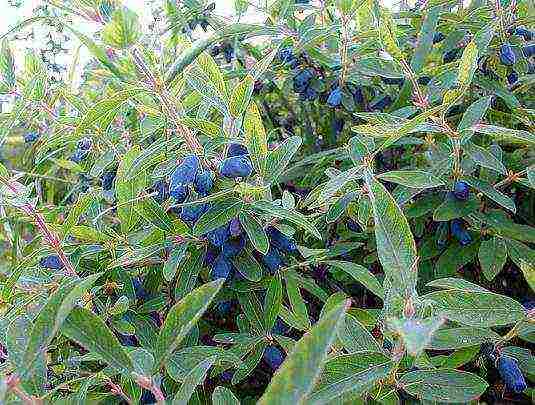
Honeysuckle varieties
Honeysuckle differs in terms of fruit ripening. On June 12-16, early ripening varieties begin to bear fruit, such as Gzhel early, Bakcharskaya, Lebedushka, Dlinnoplodnaya, Morena, Kapel, Dolphin, Fortuna, Selena, etc.
In the period from 17th to 22nd June, berries are harvested with a medium ripening period. This category includes the varieties Zarnitsa, Ivushka, Volkhova, Kuminovka, Dymka, Berel, Vasyugan, Gerda, Gzhelka, Goryanka, Bakcharsky giant, Cinderella.
At the end of June (23-30 numbers), late-ripening honeysuckle bears fruit. Here you can distinguish such varieties as: Pavlovskaya, Lakomka, Kingfisher, Amphora, Gzhel late, Chosen, Bazhovskaya, Dessertnaya, Nymph, Chernichka.
In addition to the timing of ripening, such a factor as the height of the plants is important. Bushes up to one and a half meters high are called stunted. This category includes varieties: Nizhegorodskaya early, Gzhelskaya late, Omega, Lakomka, Violet, Gerda, Julia.
The average height is considered to be up to two meters. Varieties that meet this parameter: Shahinya, Gzhelka, Kubyshka, Princess Diana, Kingfisher, Tomichka.
Plants with a height of more than two meters are considered tall (this includes such varieties as the Blue Spindle, Viliga, Volkhova, Nymph).
Honeysuckle varieties: recommendations by region
In the Moscow region and in the Central Russia, varieties such as Moskovskaya-23, Kingfisher, Kuminovka are grown. They tolerate the continental climate of temperate latitudes well (moderately frosty winters and warm humid summers).
Volshebnitsa, Elizaveta, Lenita, Bazhovskaya, Izuminka, Dlinnoplodnaya, Chernichka, Sineglazka are considered successful varieties for the Ural region. All of them have high frost resistance. Low-growing plants are most preferred.
Siberian varieties: Sibiryachka, Cinderella, In Memory of Kuminov, Selena, Kamchadalka, Pride of Bakchar, Narymskaya, In Memory of Gidzyuk, Tomichka, Vasyugan, Lazurnaya, Berel, Sirius, Sinilga, Roxana.
The varieties recommended for cultivation in the coastal region of Russia: Dolphin, Golubinka, Goryanka, Forget-me-not. They are adapted to the conditions of this region - for long springs, cold dry winters, warm humid summers.
Harvest varieties of honeysuckle
Two or more kilograms of berries from each bush give such varieties as Viliga, Souvenir, Kuminovka, Lakomka, Shahinya, Cinderella.
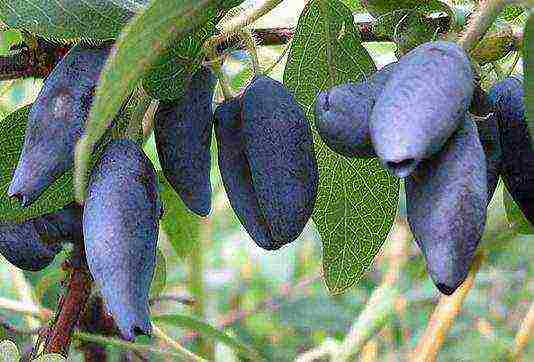
Honeysuckle variety Kamchadalka
The Kamchadalka variety is very famous. The plant gives large yields - 2.7-3.5 kg from each bush. It is characterized by good frost resistance and medium ripening times. The height of the bush does not exceed one and a half meters. The shape of the crown is conical. The plant looks beautiful in the garden. It is afraid of temperature changes, so it is grown in a temperate climate. The berries of this variety are large, with a thin skin and very delicate pulp (the average length of the berries is 2.7 cm).
The best varieties of honeysuckle
The best varieties are those that are distinguished by the large size of the berries, high yield, and good taste characteristics. The category of the best and most popular varieties includes Bakcharskaya, Silginka, Parabelskaya, Kingfisher, Veliga, Violet, Kuminovka, Laura, Slavyanka.
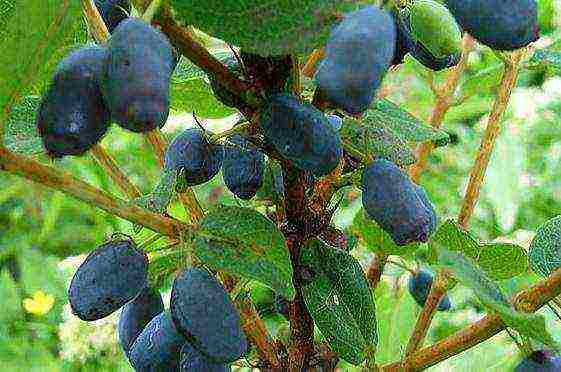
Morena honeysuckle variety
The Morena variety is widely known. A bush with a rounded crown has an average height. The shape of the berries is cylindrical. The skin is covered with a waxy coating. The average berry length is 2.8 cm (weight - 1-1.2 g). The peel of the berries has a high density, which makes it possible to transport the crop with practically no losses. Ripening period is average.
Honeysuckle: large-fruited varieties
Large varieties of honeysuckle produce fruits, the weight of which varies within 1.4-2.7 g. Popular varieties: Neosypayuschaya, Sladkoplodnaya, Tatiana, Alena, Polina.

Honeysuckle variety Zagogulinka
The largest berries are in the Zagogulinka variety. Their average weight is 2.7 g, length is up to 5 cm. The berries have an elongated-curved shape with a thickening at the bottom. The skin is covered with bloom. The fruit has a pleasant taste, but with a slight bitterness. Ripening period - early, bushes - spreading. The fruits almost do not crumble, but they are easily removed from the branches.
Honeysuckle: sweet varieties
Gardeners have noticed that the fruits of any variety of honeysuckle become sweeter and lose notes of bitterness if the plants are watered abundantly from the moment the buds are formed until the berries are poured (after that, watering must be reduced). The sweetest varieties of honeysuckle: Silginka Roxana, Altair, Omega, Nymph, Souvenir.
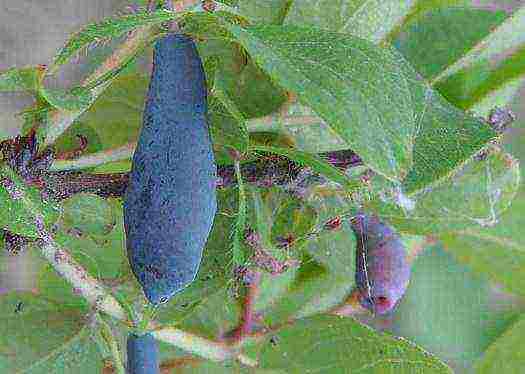
Honeysuckle variety Sibiryachka
The Sibiryachka variety is beyond any competition in terms of sweetness. It has an early ripening period, withstands low temperatures well and has a high yield (up to 3.5 kg of berries from each bush). The berries hardly crumble. The height of the bush is average. Fruit weight - about 1.4 g, shape - fusiform, taste - dessert.
Decorative varieties of honeysuckle
In addition to varieties that produce edible fruits, there are decorative varieties that are used to decorate the garden. In turn, they can be upright or curly. Popular decorative varieties and types: Golden, Alpine, fragrant Caprifol, Henry, Korolkov's honeysuckle, Maak's honeysuckle, etc. Many varieties of honeysuckle exude a pleasant aroma.
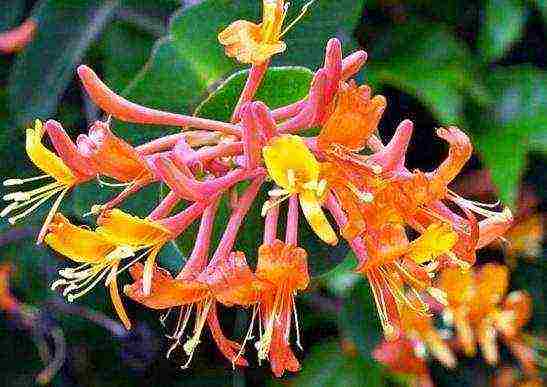
Brown's honeysuckle
Brown's honeysuckle looks very beautiful in the garden. According to its external characteristics, the plant is a compact, climbing, semi-evergreen liana. The leaves of the plant are colored bluish green. Bright tubular flowers bloom towards the end of summer. Ripe berries are colored red. The average height of the vine is 4 m. The plant needs shelter for the winter.
Honeysuckle is a useful plant that attracts attention not only for its beauty, but also for the taste of berries. A big plus is the varietal variety - everyone can choose the most successful variety, focusing on the climatic features of the region and on personal preferences.
